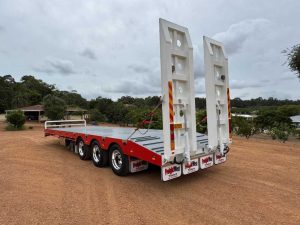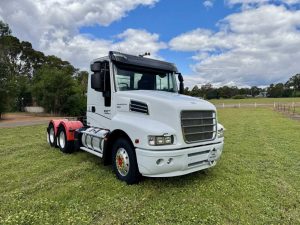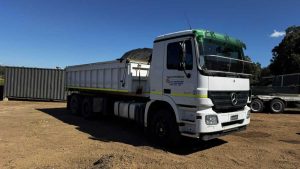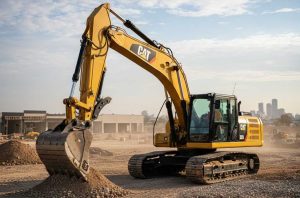The Caterpillar D9L Dozer is a legendary piece of heavy machinery that has earned its place as a benchmark in the world of earthmoving and construction. Known for its power, durability, and versatility, the D9L has been a trusted workhorse in industries such as mining, large-scale construction, forestry, and land development. Its robust design, high-performance engine, and operator-focused controls make it a go-to choice for contractors who demand reliability and strength in the most challenging environments.
From the moment it was introduced, the Caterpillar D9L Dozer redefined expectations for dozing performance. It bridged the gap between brute force and precise control, offering an impressive balance that allowed it to handle a wide range of tasks from pushing massive quantities of material to fine-grading complex job sites. Even today, decades after its launch, it remains a sought-after model in the used equipment market for operators who understand the value of proven engineering.
History and Evolution of the Caterpillar D9L
The Caterpillar D9 series has long been regarded as one of the most important lines in the dozer industry. When the D9L model entered the scene in the 1980s, it represented a significant leap forward. Compared to earlier models in the D9 family, the D9L was bigger, heavier, and more powerful. It offered increased horsepower, an upgraded undercarriage, and more advanced hydraulics, making it more capable of handling demanding workloads.
The D9L was part of a broader trend in heavy machinery at the time building larger, more efficient machines that could move more material with fewer passes, reducing fuel costs and increasing productivity. This focus on efficiency still defines modern equipment, but the D9L set a precedent for what a high-production dozer should be.
Operators who ran the D9L in its prime often remember it as a machine that combined raw power with surprisingly smooth handling. This was thanks to Caterpillar’s advancements in transmission design and hydraulic responsiveness, giving operators the ability to control massive amounts of force with precision.
Key Specifications and Performance
While specifications varied slightly depending on configuration and year of manufacture, the Caterpillar D9L typically offered:
- Engine Power: Around 460–500 horsepower, depending on build.
- Operating Weight: Approximately 100,000 lbs (45 tonnes).
- Blade Capacity: Around 13–18 cubic metres depending on blade type.
- Track Gauge: Wide stance for stability in tough terrain.
- Transmission: Powershift transmission designed for heavy push loads.
- Undercarriage: Heavy-duty design for extended wear life.
One of the standout features of the D9L was its sheer pushing capability. Whether clearing a large mining bench or cutting a road through hard-packed clay, it could move serious amounts of material with efficiency. The extra weight compared to earlier models translated directly into greater traction, which meant more pushing power with less track slip.
Applications in the Field
The Caterpillar D9L Dozer was built to thrive in challenging applications. Some of its most common uses included:
- Mining Operations – Stripping overburden, building haul roads, and maintaining dumpsites.
- Large-Scale Construction – Preparing sites for infrastructure projects, highway construction, and earthmoving for industrial complexes.
- Forestry Work – Land clearing, road building, and stump removal in logging areas.
- Land Reclamation – Reshaping landscapes for agriculture or environmental restoration.
- Military and Remote Applications – Used in projects where rugged, dependable equipment is essential.
Its versatility meant it could be fitted with different blade types from straight blades for fine grading to semi-U and U-blades for moving large volumes of material. The ability to handle a variety of attachments made it a multi-purpose tool on the job site.

Why the Caterpillar D9L Still Has a Loyal Following
Even though newer dozer models have replaced the D9L in Caterpillar’s lineup, many experienced operators still seek out these machines. The reasons include:
- Proven Reliability: The D9L was engineered to last, and many units are still operational decades later.
- Ease of Maintenance: Its mechanical design is straightforward compared to some modern machines, making repairs and servicing simpler for experienced technicians.
- Lower Purchase Cost (Used Market): Compared to buying a new high-horsepower dozer, a well-maintained D9L can be significantly more affordable.
- Familiar Controls: For operators who learned on this machine, the feel and control layout remain intuitive.
When looking to invest in a used D9L, it’s important to assess the condition of the undercarriage, hydraulic systems, and powertrain. A thorough inspection ensures the machine will continue to perform at the high level it was designed for.
If you’re interested in seeing similar heavy-duty equipment, you might also find inspiration in articles such as Why Choose the Sinotruk Sitrak T5G Agitator Truck and Purchase New Sinotruk Sitrak C7H 6×4 Cab Chassis, which highlight other robust machinery options.
Operator Comfort and Safety
One of the underappreciated aspects of the D9L was its focus on operator comfort, especially considering the era in which it was released. The cab was designed to reduce vibration and noise levels, while the controls were positioned for ease of use over long shifts.
Safety was also a priority. The heavy-duty ROPS (Roll-Over Protective Structure) cab gave operators peace of mind, while the machine’s stability reduced the risk of rollovers even in uneven terrain. The visibility from the operator’s seat allowed for better awareness on busy job sites.
Maintenance and Longevity
The Caterpillar D9L was engineered for long service life, but like any heavy machine, its longevity depends on proper maintenance. Routine tasks for keeping a D9L in top shape include:
- Regular undercarriage inspections to check for wear on rollers, idlers, and tracks.
- Engine oil and filter changes at recommended intervals.
- Hydraulic system checks for leaks and contamination.
- Blade and cutting edge inspections to maintain efficient dozing performance.
Many owners who follow strict maintenance schedules have kept their D9Ls in productive service for decades. Because it’s a mechanical powerhouse, the D9L is often easier to overhaul than some newer electronically controlled machines.
For those who appreciate durable designs, browsing listings like the Freightwest Next Generation Heavy Duty Triaxle Dropdeck Trailer can give further insight into equipment built for the long haul.
The Caterpillar D9L in Modern Context
In today’s construction and mining industries, the D9L is considered a classic not just for its performance but for the impact it had on heavy machinery design. Many modern dozers trace their lineage back to the innovations introduced in the D9L.
Although newer models feature advanced electronics, GPS integration, and emissions technology, some operators still prefer the mechanical dependability of machines like the D9L. In certain parts of the world, these dozers remain frontline production units, proving that a well-built machine can stand the test of time.
If you’re looking to explore other unique equipment options, the Caterpillar 730C Dump Truck Moxy is another example of a rugged, high-capacity workhorse that’s made for demanding job sites.
Considering a Caterpillar D9L Purchase
For buyers considering a Caterpillar D9L, here are some tips:
- Inspect the Undercarriage: It’s one of the most expensive components to replace.
- Check Engine Health: Look for excessive smoke, unusual noises, or leaks.
- Hydraulics Matter: Smooth blade and ripper operation indicate healthy pumps and cylinders.
- Review Service Records: A machine with documented maintenance is always worth more.
- Consider Transportation Costs: With its weight and size, moving a D9L requires careful logistics.
Buyers often work with heavy equipment specialists to locate a D9L that fits their budget and operational needs. Networking within the industry or through online listings can also help locate well-maintained units.
Where the D9L Fits in Today’s Equipment Fleet
While modern fleets often prioritise newer models for primary production, the D9L still has a place in many operations as a secondary dozer or backup unit. Its ability to handle tough jobs without sophisticated electronics makes it ideal for remote or rugged worksites where advanced diagnostic tools may not be readily available.
For operations needing flexible site solutions, the Container Accommodation units offered in the heavy equipment market show how equipment diversity can improve overall efficiency on large projects.
The Caterpillar D9L Dozer remains a symbol of engineering excellence in the heavy equipment industry. With its unmatched durability, powerful performance, and operator-friendly design, it has carved out a legacy that continues to influence dozer design to this day. Whether used in mining, construction, forestry, or reclamation, the D9L proves that a machine built right can serve generations of operators.
FAQs
1. What makes the Caterpillar D9L Dozer different from other dozers in its class?
The D9L stands out for its combination of raw pushing power, heavy-duty construction, and operator-focused controls. When it was released in the 1980s, it offered more horsepower, greater stability, and improved hydraulic responsiveness compared to earlier models, setting a new benchmark in the dozer industry.
2. What is the typical operating weight of a Caterpillar D9L?
Depending on its configuration and year of manufacture, the D9L generally weighs around 100,000 lbs (approximately 45 tonnes). This substantial weight helps provide excellent traction and pushing capability in demanding conditions.
3. In what industries is the D9L most commonly used?
The D9L has been widely used in mining, large-scale construction, forestry, land reclamation, and military projects. Its versatility and ability to work in harsh environments have made it a favourite in operations requiring both strength and reliability.
4. Is the Caterpillar D9L still worth buying today?
Yes, for the right applications. While newer models offer advanced technology and emissions controls, a well-maintained D9L remains a reliable, cost-effective choice for operators who value mechanical durability, ease of maintenance, and proven performance in tough conditions.
5. What should I look for when inspecting a used D9L before purchase?
Key areas to inspect include the undercarriage (rollers, idlers, and tracks), engine health, hydraulic system operation, blade condition, and service history. Because the undercarriage is expensive to replace, its condition can significantly impact the value and usability of the machine.







